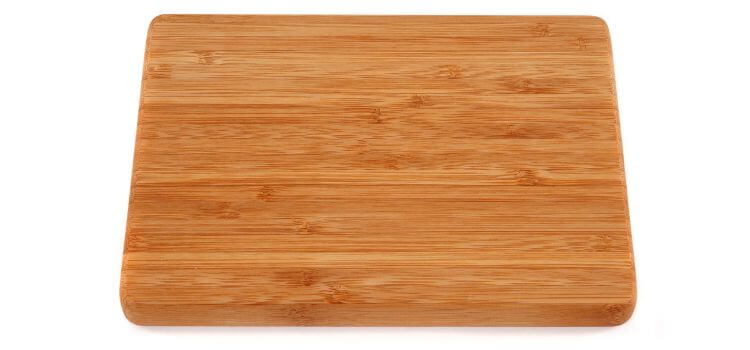As an Amazon Associate, I earn from qualifying purchases

In the world of culinary tools, cutting boards hold a special place, often bridging the gap between functionality and aesthetics. Among the myriad of materials available, alder wood has recently emerged as a contender for crafting cutting boards. But is alder truly a good choice? To answer this, we’ll delve into the characteristics of alder wood, examining its suitability for cutting boards and comparing it with other popular materials.
Alder wood, primarily known for its workability and appealing grain, has been a staple in woodworking for centuries. Used widely in furniture making and cabinetry, its subtle grain pattern and warm tones make it an attractive option for various applications. But how does it fare in the kitchen, specifically for cutting boards?
Characteristics of Alder Wood
The allure of alder begins with its physical attributes. It is a moderately dense hardwood, softer than maple but harder than pine, presenting a delicate balance that can be both beneficial and challenging.
A. Physical Properties
Alder is characterized by its fine, even texture and straight grain, offering a uniform appearance. Its color ranges from light tan to reddish-brown, often darkening with age, giving it a rustic charm that can complement many kitchen styles.
B. Workability
One of alder’s most praised features is its workability. It is easy to machine, sand, and finish, making it an excellent choice for craftsmen. This ease of shaping allows for intricate designs and smooth finishes, making alder boards both functional and beautiful.
Advantages of Alder Cutting Boards
When considering alder for cutting boards, several advantages stand out.
- Aesthetic Appeal: Alder’s natural beauty cannot be overstated. The subtle grain and warm hues provide a visually pleasing surface, making it an attractive centerpiece in any kitchen.
- Softness and Knife Friendliness: Alder’s softness is gentle on knife edges, reducing wear and tear on your blades. Unlike harder woods, which can dull knives quickly, alder provides a forgiving surface that prolongs the lifespan of your culinary tools.
- Sustainability: Alder grows rapidly and is considered a sustainable resource. Its environmental benefits make it an appealing choice for the eco-conscious consumer, aligning with the growing trend toward sustainable kitchen practices.
Disadvantages of Alder Cutting Boards
Despite its merits, alder has some drawbacks when used in cutting boards.
- Susceptibility to Scratches: Due to its softer nature, alder is more prone to scratches and dents compared to harder woods like maple or oak. Over time, this can affect both the board’s appearance and functionality.
- Water Absorption and Warping: Alder tends to absorb moisture, which can lead to warping or cracking if not properly maintained. Regular oiling and careful cleaning are necessary to ensure its longevity, which might deter some users seeking low-maintenance options.
Comparison with Other Cutting Board Materials

To truly understand alder’s place in the hierarchy of cutting board materials, it’s essential to compare it with other popular choices.
Alder vs. Hardwoods
Hardwoods like maple and cherry are traditional choices for cutting boards due to their durability. While alder is softer, its environmental advantages and aesthetic appeal offer a unique alternative.
Alder vs. Bamboo and Plastic
Bamboo is another eco-friendly option, known for its hardness and resistance to moisture. However, it can be tough on knives. Plastic boards are durable and dishwasher-safe, offering convenience but lacking the natural beauty and charm of wood.
Factors to Consider When Choosing Alder for Cutting Boards
When deciding on alder, several factors should be weighed.
- Durability and Lifespan: Alder’s softer nature may mean a shorter lifespan compared to harder woods. However, with proper care, it can provide years of service.
- Maintenance Requirements: Regular maintenance, such as oiling and careful cleaning, is crucial for alder boards. While this may be a downside for some, others may find the upkeep a worthwhile trade-off for its aesthetic benefits.
- Cost and Availability: Alder is generally more affordable than many hardwoods, making it an attractive option for those on a budget. Its availability varies by region, but it is commonly found in many woodworking and furniture supply stores.
Practical Advice for Consideration
For those considering alder cutting boards, here are some practical tips:
- Care and Maintenance: To maintain an alder cutting board, wash it with mild soap and water, dry immediately, and apply mineral oil regularly to prevent drying and cracking. Avoid soaking the board or exposing it to extreme temperatures.
- Best Uses in the Kitchen: Alder boards are best suited for light to medium use, such as slicing fruits and vegetables or serving cheese and bread. For heavy-duty tasks like chopping meat, consider using a harder wood or a separate board.
Conclusion
In conclusion, alder presents a compelling case as a cutting board material. Its aesthetic appeal, sustainability, and knife-friendly surface make it an attractive choice for many home cooks. However, its susceptibility to scratches and need for regular maintenance may not suit everyone.
Ultimately, whether alder is the right choice depends on individual preferences and kitchen needs. By weighing its advantages and drawbacks, you can make an informed decision that enhances both the functionality and beauty of your culinary space.
FAQ
What is the best wood for a cutting board?
Maple is often considered the best wood for cutting boards due to its durability, fine grain, and resistance to bacteria. It balances hardness with knife friendliness, offering a long-lasting surface that protects your blades and meets food safety standards, making it a popular choice among chefs.
Is Alder good for woodworking?
Alder is excellent for woodworking, prized for its workability and smooth finish. It is easy to machine, sand, and stain, making it ideal for furniture, cabinetry, and decorative pieces. Its affordability and attractive grain make it a versatile choice for both novice and experienced woodworkers.
Is Alder wood easy to cut?
Yes, alder wood is easy to cut due to its soft and consistent texture. It machines well, allowing for precise cuts and shaping. This workability makes alder a favorite among woodworkers for projects requiring intricate designs or smooth finishes, enhancing both efficiency and creativity.
As an Amazon Associate, I earn from qualifying purchases